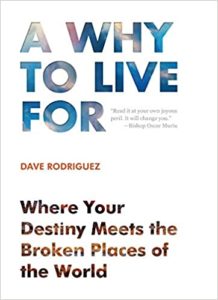We argued over green beans.
Squabbling in that supermarket aisle, holding the Del Monte can in one hand and the black and white labeled generic brand in the other, I struggled to not raise my voice at Penny. 40 years ago, my foodie sensibilities would not allow me to buy just plain old green beans, while to Penny, the missionary kid who grew up on the edge of the jungle in South America, spending $0.45 more on canned vegetables was nothing short of a ridiculous extravagance.
Of course, as always, she was right, especially since spending that $0.45 was irresponsible as we were just barely scraping to get by financially.
We had no financial margin in our lives. We spent every dollar we brought in…plus some.
Thankfully, as our income increased and our fiscal discipline along with it, those money battles faded. But financial margin, to this day, remains a factor in the state of my well-being. I suspect it does for you too.
Maybe this is too simplistic, but I think the key to financial health lies in paying attention to the financial margin you have in your life. At the end of the month or year, have you spent less than you have brought in? If that is true, then you have financial margin. If that is not true and has rarely been true, then you do not have financial margin, and I’m going to go out on a limb and guess that your well-being is suffering.
This is week 3 in our well-being check-up. In the introduction, I suggested that, on a regular basis, each of us should pause and take stock of the state of our lives. Am I happy? Am I content? How do I feel about myself? I believe well-being can be measured more precisely by examining six key life factors that inform our state of existence. Read the introduction here.
We began the check-up in Part 1 by examining the state of the relationships in our lives. Read Part 1 here.
Last week, in Part 2, we did an honest assessment of our inner world – the place of our mental, emotional and spiritual health. Read Part 2 here.
In the weeks ahead, we’ll take a deep dive into the final three life factors: our physical health, our focus and order and finally, our purpose. But today…let’s talk money.
Here are the hard facts. Many people do not have fiscal flexibility. They have no emergency fund. They have little savings for the future. They share very little. Simply put, they have no financial margin.
- 30% of Americans have no personal budget.
- Only 24% of Millennials demonstrate basic financial literacy.
- Only 30% of Americans have a long-term financial plan.
- Just 39% of Americans have enough cash to cover a $1,000 emergency.
- 70% of Americans will tell you that their retirement plan is to just keep working.
Do you find yourself in any of those statistics? Let’s be honest. Financial stress takes a toll on our well-being. That’s an understatement. Studies have shown that among the negative effects of financial stress are low self-esteem and impaired cognitive functioning. This means you cannot attend to the other problems of your life as well when you’re deeply concerned about money. Studies have also shown that people feel almost twice as much physical pain during a financially unstable time in their life.
Could this be true of you? Let’s do a deeper, honest look at the real state of your finances. Grab your notebook and a pen.
Assess of the State of Your Inner World
Do you have the funds available to cover a $1000 emergency?
Do you have a budget and do you keep it?
How many months in the past year have you spent more than you brought in?
How much do you have saved for retirement?
Are you doing any charitable giving?
How much debt do you have?
Are you setting a good financial example for your children and loved ones?
Dream
Now that you’ve honestly clarified the state of your finances, what do you wish it could look like? Think best case scenario. What do you want? Imagine yourself happy and content with your money situation. Now, write out a dream…a small paragraph that captures your greatest longings for your financial world. Don’t over think this; just emote.
Set a Few Goals
Armed with your dream, create a few (no more than three) specific, measurable goals that, if pursued, could very well help your dream become reality. Here are a few examples:
Create a budget.
Save $1000 in 3 months.
Cancel x number of subscriptions.
Set a meeting with a financially healthy friend to seek their advice.
Practice New Habits
With your dream firmly in your mind and your goals in front of you, identify some regular, very practical practices you can commit to over the next three months that will help you achieve your goals. Here are a few examples:
Track every expense for a month..
Brew your own coffee.
Limit eating out to once per week.
Remember, this is not meant to be a complicated strategic plan. It is meant to be doable. You have to get a few wins to move the needle on your well-being.
Dreams + Goals + Habits
Then you’ll re-set them each season – an ongoing well-being plan. Think it might work for you? Next week we’ll add another life factor to analyze and dream about. But for now, make a cup of tea, pull up your bank statement and take a long hard look.




0 Comments